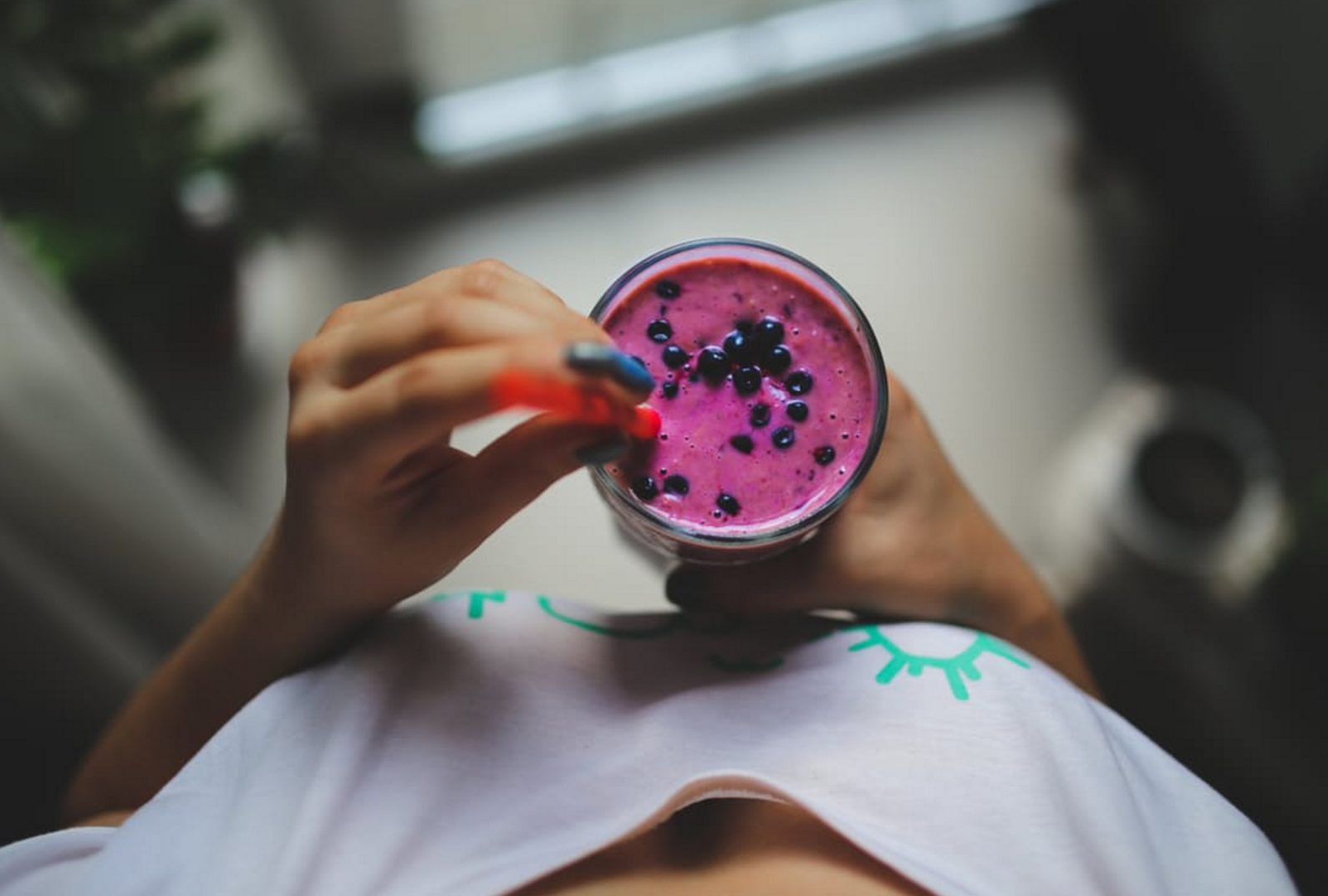Smoothies. They're the drink that keeps on giving. Whether in their recent metamorphosis as gloriously topped and striped bowls, or overflowing from a vintage mason jar with a trendy, compostable straw, we can’t get enough of liquefying our fruits, vegetables, nuts and seeds into a one-stop meal shop.
But have you heard? Whispers of smoothie rebellion abound. Smoothies don’t fill you up! Smoothies spike blood sugar! Smoothies are NOT meals!
What gives? The answer, of course, is -it depends.
What the eff am I going to eat now.
3 Inappropriate Smoothies
1- The Weight Loss Smoothie
Liquefied meals for weight lose hit a lot of wrong notes. First, science tells us that drinking a meal doesn’t send the same satiety signals to our brain as eating one; our brains like chewing. That sets us up for immediate dissatisfaction and more food consumption later. Second, the idea of cutting calories to lose weight is… well, flawed. While calories DO play a role in weight gain and weight loss, they got nothing on our hormones. And significantly reducing our calories sends the clear message to those hormones that times are tough, metabolism should be slowed, and fat should be stored. Not helpful. And lastly, depending on our program or recipe, a meal replacement usually lacks a wealth of nutrients. Whether from cutting fat, lacking protein, or overemphasizing particular micronutrients, smoothies are easily off-balance from a nutrition standpoint.
2- The Sugar Crutch Smoothie
If it looks like dessert and tastes like dessert… you probably shouldn’t be eating it for breakfast. Or lunch. Or an afternoon snack. Don’t be fooled by the halo of wheatgrass; when it comes with a name like Peanut Butter Dreamboat or Pina Cocolada, rest assured that your smoothie is likely a sugar bomb. And spiking blood sugar is never cool. While there’s an argument to be made for the benefits and balance of whole-fruit sugars, those points are negated when the delivery vessel is a puree of 2-4 servings of fruit, quickly absorbed. Too much is too much. And even though it’s not the dreaded high fructose corn syrup, it’s still enough fructose to put a strain on the liver. As for some icing on the cake, sweet smoothies heighten our threshold for sweet flavors, and trains our taste buds to seek them out.
3- Pre-Workout Fuel
Smoothies and workouts might seem to go hand in hand, but sugar-laden smoothies are actually a poor choice of snack when you’re about to get your sweat on. Whenever the body gets an influx of sugar, insulin goes to work as the clean-up crew, storing the excess in muscle and liver cells. As an anabolic hormone, it favors storing and building over burning and breaking down. Sounds alright, but if insulin is active in your body immediately before a workout, it can work against your goals by attempting to store those same sugars that you planned to burn. Instead, save those carbohydrates for a mid-workout boost, when you’re already sweating and burning glucose, or for afterwards, to replenish your glycogen stores.
3 Rocking Smoothies
1- Post-Workout Fuel
A post-workout smoothie can be the perfect go-to for refueling. The ideal recovery snack includes some carbohydrates to replenish glycogen stores (and to send the message to your body that “HEY we’re good! Keep on burning!”). 20-30 grams is usually appropriate, which is easily met with one banana, or one apple, or one medium sweet potato; all excellent smoothie fodder. A scoop or two of protein powder will net you 10-15 grams of protein which will be put to work repairing and building muscles. While you may be tempted to skip that post-workout snack in an effort to lose a few extra pounds, don’t bother. It’s actually by feeding ourselves plenty of the right stuff that our body is encouraged to burn of extra fat stores.
Somebody get this man a smoothie!
2- Healing
Times of sickness and stress can seriously deplete our bodies of nutrients. They will also inhibit proper digestion as our bodies allocate less energy and resources to the absorption of our foods, and more to its attempt at healing. Smoothies can help with that issue by providing nutrients in an easily digestible, pureed form. For the same reasons that high-sugar smoothies are bad (too much, too quick), a well-balanced smoothie rich in vegetables and boosters can be excellent for healing. If serious digestive troubles are in action, produce can be lightly steamed before pureeing for even simpler absorption.
3- Checking All the Boxes
I’m a big fan of whole foods eating. I enjoy hearty meals and love to cook. Still, there are times when I turn to smoothies to add a few missing puzzle pieces. Whether it’s a bit of extra protein that I know was lacking from my breakfast or a hefty dose of leafy greens for their nutrients and fiber, I love the ease and benefits of using a low-sugar, functional smoothie to get these in my day. It’s the perfect vessel for superfoods like maca, turmeric, or raw cacao and can take our daily nutrition to the next level.
So by all means, use the smoothie. LOVE the smoothie. Just avoid the smoothie pitfalls and use it for good.
And check out Elizabeth Rider's page for some DIY, green smoothie guidelines!



